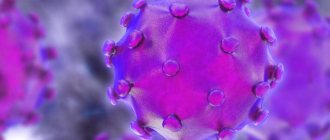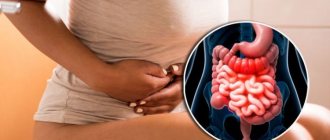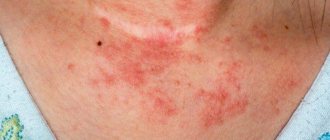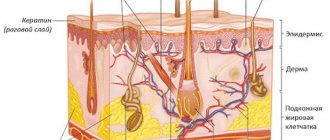The puberty period (puberty) includes a series of stages of development of the body during which a girl’s puberty occurs and her reproductive function becomes established. This process is accompanied by marker neuroendocrine and physiological changes in the reproductive system and culminates during the development of secondary sexual characteristics, the ability to ovulate and menstruate, and achieve fertility.
- Formation of secondary sexual characteristics
- Telarche
- Pubarhe
- Menarche
- Disorder of pubertal development
- Menstrual cycle
Significant growth spurts as well as dramatic psychosocial changes also characterize pubertal development. But changes in growth and psychosocial development are not always synchronous with changes in the reproductive system, which leads to an incorrect interpretation of individual “maturity.” Girls go through puberty faster than boys. Thus, girls complete pubertal development in 3 years, while boys - in 5 years.
Formation of secondary sexual characteristics
Towards the beginning of phenotypic changes in connection with the regeneration of the reticular zone of the adrenal cortex, adrenarche occurs (at 6-8 years). Gonadarche (around 8 years of age) occurs with the onset of stimulation by gonadotropin-releasing hormone (GnRH) of the anterior pituitary gland to secrete luteinizing hormone (LH) and follicle-stimulating hormone (FSH). This in turn triggers the onset of subsequent physical changes, including breast development (thelarche), development of pubic and axillary hair (pubarche), growth spurt, and onset of menstruation (menarche), usually in that order. Adrenarche and gonadarche are not parts of pubertal development.
Puberty: treatment, how to treat puberty disorders
Sarklinik provides treatment for disorders of puberty in Saratov , treatment of disorders of puberty in Russia, treatment of retardation, treatment of delayed puberty, treatment of premature puberty, treatment of early puberty, treatment of sexual dysfunction, treatment of late delayed puberty in boys and girls, guys and girls, children and teenagers. At the first consultation, the doctor will tell you how to treat puberty disorders and how to cure delayed puberty.
There are contraindications. Specialist consultation is required. Make an appointment and consultation.
Text: ® SARCLINIC | Sarclinic.com \ Sarlinic.ru Photo: (©) Zastavkin | Dreamstime.com \ Dreamstock.ru The guy and girl shown in the photo are models, do not suffer from the diseases described and/or all coincidences are excluded.
Related posts:
Speech areas of the cerebral cortex: motor, sensory, Wernicke's center, Broca's center, treatment
Enuresis in boys, treatment of enuresis in boys, nocturnal, daytime enuresis
Children's rehabilitation in Saratov
If a patient with Tourette syndrome does not want to be treated, what to do?
Speech Correction Center, Central Clinical Hospital Sarclinic Saratov, speech development center, correction of speech disorders
Comments ()
Hormonal changes before puberty - adrenarche and gonadarche
Adrenarche - an increase in the production of androgens by the adrenal glands - occurs between the 6th and 8th years of life. In the adrenal glands, regeneration of the zona reticularis, which was suppressed immediately after the birth of the girl, begins, with a concomitant increase in the activity of P450 microsomal enzymes. This inner layer of the adrenal cortex is responsible for the secretion of sex steroid hormones. As a result, the production of androgenic steroid hormones of the adrenal glands - dehydroepiandrosterone sulfate (DHEAS), dehydroepiandrosterone (DHEA) and androstenedione - increases, which occurs from 6-8 to 13-15 years.
Gonadarche - the establishment of normal ovarian function - begins around 8 years of age, when pulsatile secretion of GnRH by the hypothalamus increases. This leads to stimulation of the synthesis of gonadotropins FSH and LH by the anterior pituitary gland, occurs mainly during sleep and is not accompanied by any phenotypic changes.
The first sign of puberty is an increase in pulsatile LH secretion at night. This pulsatile secretion of LH at night is reversed by pulsatile secretion of LH and FSH during the day, which leads to an increase in estrogen levels due to the growth of follicles in the ovaries. Positive feedback from the increase in estradiol levels initiates the LH surge necessary to induce ovulation.
Adrenarche is not necessary for normal ovarian function - gonadarche. This is confirmed by the fact that patients with hypofunction of the adrenal cortex have normal pubertal development. The ovaries, in turn, can begin to function before adrenarche in case of premature pubertal development. On the other hand, gonadal function is not necessary for adrenal function, as evidenced by normal adrenarche in patients with gonadal dysgenesis.
The first phenotypic change during puberty in most cases is the onset of mammary gland development (thelarche), which occurs around 10 years of age. But sometimes there may be an increase in the rate of linear growth 1-2 years before the onset of thelarche, signaling the onset of pubertal development.
After thelarche, pubic hair growth, pubarche, begins to develop (often together with axillary hair), which occurs around 11 years of age. Further events are usually the pubertal growth spurt (9 cm/year), which occurs around age 12, and finally menarche around age 13. Menarche usually occurs 2-2.5 years after thelarche. Normal pubertal development begins within 2.5 standard deviations from the mean, i.e. between 8 and 14 years.
Telarche
The first stage of thelarche is the development of the mammary gland buds, usually occurring around 10-11 years of age. Thelarche is usually the first phenotypic change in a series of events during puberty and occurs due to an increase in circulating estrogen levels. Simultaneously with thelarche, estrogenization of the vaginal mucosa and development of the vagina and uterus occur. Further development of the mammary glands occurs during puberty and adolescence. Corresponding changes in the mammary glands are divided into 5 stages, according to the classification of Marshall and Tanner.
Pubarhe
The onset of pubic hair growth usually occurs after thelarche, around 11–12 years of age, and is often accompanied by axillary hair growth. Pubarche usually occurs after thelarche, but simultaneous development of thelarche and pubarche is also normal. In representatives of the black race, pubarche may precede thelarche, which is not a pathology.
The development of pubic and axillary hair occurs secondary to an increase in the concentration of circulating androgens. Sometimes the concepts of pubarche and adrenarche are used as synonyms, but this is not entirely true. Pubarche is the development of pubic hair, which occurs under the influence of adrenal androgens after the age of 10 years in the stage of pubertal development, and adrenarche is the activation of androgen synthesis in the adrenal glands, which occurs between the 6th and 8th years of life and precedes the onset of pubertal development.
Pubertal growth spurt
Increased estrogen secretion stimulates the production of growth hormone, which in turn stimulates insulin-like growth factor I, which promotes increased somatic growth. The pubertal growth spurt is characterized by an acceleration of the girl's growth, begins at the age of 9-10 years and reaches a maximum speed between 12 and 13 years (9 cm / year).
But this relationship is dose-dependent, and excessive estrogen levels lead to inhibition of the release of growth hormone and somatomedin-C. Subsequently, as a result of the influence of estrogens on the cessation of growth of the epiphyseal growth zones of long tubular bones, growth cessation may occur after a rapid growth spurt.
Estrogens enhance the growth of bones, especially the axial skeleton. Growth hormone has a greater effect on the growth of long bones. This explains the fact that patients with hypogonadism often have a short torso with relatively long limbs (eunuchoid habitus). With growth hormone deficiency, patients often have an appearance opposite to their genetic sex. Estrogens also promote the closure of the epiphyseal growth zones of long bones. So, patients with precocious puberty have an early onset of growth, but ultimately have short stature due to premature closure of the epiphyseal growth plates if timely treatment is not carried out.
Sex life of teenagers
Often boys and girls, boys and girls, teenagers are interested in such issues as puberty, sex life, wet dreams, genitals, labia majora, labia minora, genitals, erection, penis, vagina, clitoris, virgin hymen, sexual maturity, sexual intercourse. Teenagers are also interested in the following questions. What is the male reproductive organ? Which gender is more interesting? What is nudism? Who are naturists, nudist girls, puberty name? How long does the process of puberty last? What is the norm of sexual development, standards? Why does late puberty and impotence occur in children? What are the dangers of frigidity, prostatitis, early ejaculation, vaginismus? How to achieve orgasm for a girl? Why isn't the dick worth it? Why is my penis crooked? How to prolong sex? Why is the vagina dry? Why is the clitoris swollen after sex? Why is the vagina narrow? What should you do if it drips from your penis and burns in your vagina?
Dear teenagers, if you have any of the above questions, you can consult a doctor on the topics that interest you absolutely free on the sarclinic website and get up-to-date answers. The site and the doctor are waiting for your questions.
Menarche
The average age of menarche (first menstruation) ranges between 12 and 13 years (12.7 years). Menarche usually occurs 2 years after thelarche (development of the mammary gland buds). The menstrual cycle in adolescents is usually irregular during the first 6 months to 1 year after menarche, indicating anovulatory cycles. The establishment of regular ovulatory cycles begins approximately 2 years after menarche.
Delayed menarche can occur in gymnasts, long-distance runners and ballerinas. It has been suggested that the signal for the onset of menarche is the achievement of a certain body weight (17-22% body fat), usually occurring at body weight > 45 kg. But there is no exact data on what affects the delay of menarche more: lack of adipose tissue or stress and physical activity.
Ovulatory menstrual cycles are accompanied by an increase in progesterone levels after ovulation. Ovulation is usually inconsistent for 1-2 years after menarche, resulting in irregular menstrual cycles. After this period, the menstrual cycle in adolescents should become established, and the absence of regular cycles may indicate reproductive disorders.
Prevention of hypothalamic syndrome
There are no special measures to prevent the disease. The only thing that will help reduce the risk of developing hypothalamic syndrome is a healthy lifestyle. To avoid endocrine and autonomic disorders, doctors advise:
- eat nutritiously, avoiding fast food and other junk food;
- get enough sleep (at least 8 hours of sleep at night);
- It is enough to walk in the fresh air;
- play sports for the uniform development of all organs and systems in the body;
- regularly visit a pediatric endocrinologist and monitor hormonal levels;
- avoid stress and increased emotional stress;
- to refuse from bad habits.
Girls are recommended to visit a gynecologist once every 3-6 months and monitor their menstrual cycle.
Hypothalamic syndrome can occur suddenly. Teenagers should be attentive to their health and report any unusual sensations. Seeing a doctor in a timely manner will help you stay active and enjoy life. The multidisciplinary clinic “SM-Doctor” employs only experienced endocrinologists who will help you quickly understand the problem and select treatment.
Disorder of pubertal development
Normal pubertal development begins between 8 and 14 years of age (±2.5 standard deviations from the mean). If a girl develops secondary sexual characteristics at age 8, or if secondary sexual characteristics are absent before age 14, or if a girl with developed secondary sexual characteristics does not menstruate before age 16, such patients are subject to additional examination.
For representatives of the black race, puberty can normally begin before the age of 8 years. Isolated premature thelarche or pubarche without other signs of pubertal development may occur, does not require urgent examination, but indicates the need for observation to exclude possible premature pubertal development. Premature thelarche usually occurs in the first 7 years of life, and premature pubarche may be an early sign of polycystic ovary syndrome later in life. Precocious pubertal development is more common in girls (5 times more common than in boys), and delayed pubertal development is more common in boys.
Pubertal development may begin earlier due to the following circumstances:
- in patients with a family history of early pubertal development;
- among representatives of the black race; when living in the equatorial zone;
- when living low relative to sea level; in urbanized cities;
- for obesity;
- in case of blindness.
Late onset of puberty can be observed:
1) with diabetes mellitus;
2) with significant degrees of obesity;
3) with insufficient nutrition;
4) with excessive stress and physical activity.
Puberty disorders
The increasing motor and neuropsychic activity of adolescents leads to increased tension in the metabolism, endocrine system, and nervous system. The processes of general excitation intensify, the stabilization of conditioned reflexes becomes more difficult, the blood supply to the brain somewhat deteriorates, and therefore fatigue and phase states develop more easily. Disorders of the nervous system, psychoneuroses, neurasthenia, depression, obsessive neurosis, and vegetative-vascular dystonia are often observed. The lability of the function of the autonomic nervous system increases, frequent stabbing pains in the heart area, palpitations, and cardioneurosis. Psychopathic manifestations are possible. Pediatricians, therapists, endocrinologists, reflexologists, and reflexologists often call the period of puberty transitional, since at the beginning of it children have not yet become adults, but they no longer feel like children. This period is especially difficult psychologically. The psyche of a teenager is very vulnerable. To prevent pathological deviations in the mental and physical development of a teenager, preventive visits to a psychologist are important. Disorders of puberty may be observed (lag, delay, slowdown, early, premature development).
Premature pubertal development
Premature puberty is the appearance of secondary sexual characteristics before the age of 8 years. In girls, about 75% of precocious pubertal development is idiopathic, while in boys it is only 40%. Modern capabilities of highly sensitive methods of intracranial imaging, in particular magnetic resonance imaging, may make it possible to identify the causes of these so-called “idiopathic” conditions.
Isosexual precocious puberty is a precocious puberty that corresponds to an individual's genetic sex.
Heterosexual precocious puberty is precocious puberty that develops in a pattern opposite to the individual's genetic sex. Heterosexual precocious pubertal development in girls reflects excessive androgen production by the adrenal glands or ovaries. Isosexual precocious development is more common than heterosexual precocious development.
There are two forms of premature sexual development : GnRH-dependent and GnRH-independent. GnRH-dependent form of precocious puberty (“true”, “complete”, “central”) develops due to premature activation of the hypothalamic-pituitary-gonadal axis, namely with early activation of the hypothalamic generator of GnRH pulsations, and is usually idiopathic.
Treatment of this condition involves the administration of gonadotropin-releasing hormone agonists (zoladex, diferelin, lupron) to suppress the premature activation of the GnRH pulsatility. One of the most serious causes of GnRH-dependent premature pubertal development are tumors of the central nervous system), in particular hamartomas. Treatment of hamartros can be surgical, radiation or medication (GnRH agonists).
GnRH-independent form of precocious sexual development (incomplete, peripheral, premature pseudopubertal development) develops due to the production of sex steroids by the ovaries, which does not depend on hypothalamic-pituitary-gonadal regulation. In some cases, peripheral hormone production can activate the hypothalamic-pituitary-gonadal axis, leading to a mixed form of precocious puberty.
The most common causes of GnRH-independent precocious puberty may be the following conditions:
- functional ovarian cysts (most common cause);
- granulosa cell tumors of the ovaries (subject to surgical removal);
- McCune-Albright syndrome is a polycystic fibrous dysplasia characterized by numerous fibrocystic bone lesions, asymmetric skin pigmentation (“coffee spots”) and precocious puberty;
- autonomous production of estrogen by the ovaries due to genetic mutations of gonadotropin receptors, which leads to their activation and premature sexual development; Treatment of this syndrome consists of prescribing an aromatase inhibitor - testolactone;
- hypothyroidism (there is a delay in bone age, in contrast to advance in all other forms, hormone replacement therapy with thyroxine is used);
- exogenous hormonal drug therapy (it is necessary to discontinue such therapy);
- steroid-producing adrenal tumors (rare, subject to surgical removal).
Diagnosis of precocious puberty and its forms begins by collecting the patient’s medical history. They find out the characteristics of the child’s growth, the peculiarities of the appearance of signs of puberty, family history regarding possible reproductive anomalies, the presence of exogenous hormonal effects, symptoms of thyroid diseases, neurological and cerebrovascular diseases (stroke).
An objective examination evaluates height, body weight relative to age standards, and weight-height ratio. The severity of secondary sexual characteristics is assessed using the Tanner scale, studies of the thyroid gland and neurological status are performed, the skin is examined for the presence of “coffee spots”, ultrasonography, abdominal and pelvic (vaginal or rectal) examination is performed to identify functional cysts and ovarian tumors.
Laboratory tests include assessment of serum levels of estradiol, LH, FSH, TSH (TSH), and human chorionic gonadotropin (hCG). In the case of heterosexual puberty, the levels of DHEAS, 17-hydroxyprogesterone and testosterone are assessed.
The most important radiological test is bone age assessment (in the bones of the left wrist) to assess skeletal maturity. Bone age was increased in all forms of premature puberty, with the exception of primary hypothyroidism (delayed bone age).
Ultrasonography is used to evaluate the pelvic organs (functional cysts, ovarian tumors) and abdominal cavity; if a tumor of the adrenal glands or central nervous system is suspected - computed tomography (CT) or magnetic resonance imaging (MRI), if McCune-Albright syndrome is suspected - bone x-ray.
Treatment of hypothalamic syndrome
Treatment methods for hypothalamic syndrome depend on the nature of the course and type of the disease. The therapeutic course is selected individually and is aimed at correcting the functions of the hypothalamus and existing disorders. Drug therapy includes the following drugs:
- hormonal – adjust the production of hormones;
- psychotropic – help normalize the patient’s mental state;
- detoxification – eliminate the consequences of poisoning with alcohol, drugs, chemicals;
- anti-inflammatory – used in the presence of infection;
- vitamin complexes – contribute to the overall strengthening of the body;
- means to improve blood circulation in the brain.
In case of a brain tumor, it is necessary to first eliminate the immediate cause of the hypothalamic syndrome.
The tumor is surgically removed, after which the functions of the hypothalamus are restored. For traumatic brain injuries, appropriate treatment is provided. Along with drug therapy, other methods are used to improve the body’s condition:
- reflexology;
- exercise therapy;
- physiotherapy;
- spa therapy.
Teenagers are strongly recommended to give up bad habits, normalize the sleep-wake cycle, optimize physical and mental stress, and avoid stress. An important condition for restoring the body is proper nutrition.
Delayed pubertal development
Delayed pubertal development is the absence of development of secondary sexual characteristics before age 14 or absence of menarche before age 16. Failure to menarche before age 16 is called primary amenorrhea.
Patients with delayed sexual development and primary amenorrhea are classified according to the presence or absence of mammary gland development (a sign of the presence of estrogen production), as well as the presence or absence of the uterus:
1. The uterus is absent in the case of production of Müllerian inhibitory factor (anti-Müllerian hormone) by testicular tissue. In this case, the karyotype and testosterone level are determined for the differential diagnosis of agenesis of the uterus and vagina (primary amenorrhea in the presence of secondary sexual characteristics in Mayer-Rokitansky-Küster-Gauser syndrome) and congenital insensitivity to the action of androgens (testicular feminization syndrome).
2. If breast development is absent, the FSH level is assessed, which makes it possible to identify ovarian insufficiency (high FSH) or hypothalamic-pituitary insufficiency (low FSH).
3. Cases of absence of the uterus and lack of development of the mammary glands are extremely rare.
4. In the presence of a uterus and the development of mammary glands, the management of patients is similar to that for secondary amenorrhea.
The most common cause of primary amenorrhea and delayed sexual development is gonadal dysgenesis (Turner, Shereshevsky-Turner syndromes). In second place in frequency is agenesis of the uterus and vagina (primary amenorrhea in the presence of secondary sexual characteristics in Mayer-Rokitansky-Küster-Gauser syndrome), in third place is insensitivity to the action of androgens (testicular feminization syndrome).
Male sexual development cycle
The content of the article
It is generally accepted that the cyclical nature of sexual development is more pronounced in women. In fact, a man’s life is also divided into cycles, each of which is regulated by a whole complex of hormonal factors.
Hormones that affect the sexual cycle and physical development of a boy are produced by the pituitary gland, hypothalamus, prostate gland, testicles and other endocrine glands of the body. The severity of sexual development and reproductive function of a man depend on the balance of hormones.
Stage 1 Puberty and puberty in boys
Puberty normally begins in a boy between the ages of 11 and 14 years. During this period, the hypothalamus begins to actively produce a specific hormone - gonadoliberin. At first, GnRH is synthesized exclusively during night sleep. Over time, this process increases, and the concentration of the hormone in the boy’s blood loses its dependence on the time of day and the sleep/wake cycle.
It is GnRH that acts as a substance that triggers the processes of puberty in a boy’s body. Under the influence of GnRH, the adrenal cortex and testes begin to synthesize a number of the most important male hormones of androgenic nature and testosterone. An increase in the concentration of these endocrine factors in a boy's blood causes a series of physical and physiological changes called puberty.
All hormonal changes in the body during puberty are aimed at developing the sexual and reproductive function of a man. During puberty, the most important process of formation of full-fledged germ cells (spermatozoa) capable of fertilization begins in the testicles. Doctors call this process spermatogenesis. From the moment the process of spermatogenesis begins, a teenager can become a father.
Signs of puberty: from boys to young men
You can talk about a boy’s puberty when the following signs and physical changes appear:
- Active growth.
The onset of puberty is accompanied by a phase of active, spasmodic growth. The first surge of male sex hormones leads to the boy’s rapid growth of 10-12 cm. Further growth may slow down for some time, after which the next jump occurs. The body of a boy at the age of 11-14 years begins to develop according to the male type - muscle mass increases, the width of the shoulder girdle increases. At the same time, the external genitalia undergo significant changes - the testicles and penis increase in size. - Pronounced hair growth.
First of all, hair growth is observed in the scrotum, groin and armpits. Somewhat later, hair begins to appear on the face, and then almost all over the body. - Pollutions.
Another sure sign of the onset of puberty is wet dreams. By this term, doctors understand involuntary uncontrolled ejaculation. This issue should definitely be discussed with the child even before wet dreams appear. - Changing the timbre of your voice.
At the age of 12-13 years, a boy begins the process of thickening of the thyroid cartilage - an Adam's apple appears. This is accompanied by lengthening of the vocal cords and growth of the throat muscles. These processes manifest themselves in the formation of a lower timbre of the voice. The process of developing timbre is also called “breaking” the voice. It can last about two years. - Skin problems.
An increase in the concentration of sex hormones also leads to activation of the sebaceous and sweat glands. This can affect the boy's skin, which becomes oilier and may be more prone to acne and breakouts.
Psycho-emotional changes under the influence of hormones
The hormonal “explosion” that accompanies puberty in a boy, in most cases, has a pronounced effect on his psycho-emotional background. This is manifested by increased excitability of the central nervous system, anxiety and even aggressive reactions.
Boys at this age are often prone to denial and can act defiantly. It is during this period that the teenager develops a pronounced sexual interest, which should be perceived as a normal stage of his physical and sexual development.
Norms during puberty
Today, specialists approach issues of puberty individually for each patient. However, there are conditional age norms.
Early puberty. If the above signs are observed in a boy under the age of 9-10 years, they speak of early puberty.
The premature onset of puberty is a clear reason to contact a medical specialist for laboratory tests for hormonal levels. Under no circumstances should you delay contacting an endocrinologist!
Early puberty may be a sign of disruption of the endocrine organs, brain tumors in the area of the pituitary gland and hypothalamus, dangerous infectious processes (meningitis, encephalitis).
Often, early puberty in a boy is observed in the presence of overweight or obesity. In this case, the danger lies in the possibility of stopping the child’s active growth.
Delayed sexual development. If signs of puberty are not observed in a boy under 14 years of age, they speak of delayed puberty. A delay can be a sure sign of a disturbance in the production of gonadotropins, a manifestation of chronic kidney disease and a sign of diabetes mellitus.
Also, late puberty can be a sign of chromosomal abnormalities, such as Klinefelter syndrome. By contacting a specialist in a timely manner and conducting a comprehensive study of hormones, it becomes possible to relatively quickly adjust hormonal levels and preserve the physical and mental health of the child.
Stage 2 Puberty
The stage of puberty at the physical level is completely completed by the age of 16-18 years. From this moment on, the man enters the puberty phase. At this stage of the sexual cycle, regular sexual life becomes a normal need for a man and cannot harm the further development of the body. It is during this period that a man has the highest level of libido and active ability to bear children.
There are no age limits for puberty for men. A man's sexual function and ability to bear children fade gradually, and in some cases persist until death, which makes it impossible to set a specific boundary for the end of puberty.
During this period, a man’s gonads work most actively, which is manifested by normal spermatogenesis. Doctors say that every hour about 100 million sperm are formed in the testicles of a mature man.
The process of development of a healthy, full-fledged reproductive cell in the male body lasts about 90 days. The process of spermatogenesis is most active at a temperature of 34 C⁰, and therefore men planning to conceive a child should avoid overheating the genitals.
Stage 3 Male menopause or andropause
For a long time it was believed that in men, puberty lasts until old age, and that male menopause does not exist. Today, endocrinologists and andrologists have introduced the concept of “male menopause” into official medical practice and consider this phenomenon as a complex of hormonal and physiological changes in aging men.
It is important to note that only a third of men report pronounced symptoms and physical manifestations of menopausal changes.
The main physiological manifestation of male menopause is physical inactivity of the gonads. This process is accompanied by a decrease in the production of steroid sex hormones and endocrine factors synthesized by the pituitary gland and hypothalamus.
As a result, the process of stimulation of the testicles, as the main gland of the reproductive system, is significantly reduced. The secretory tissue of the testicles is slowly replaced by connective or fatty tissue. As a result, the production of the main male hormone, testosterone, gradually decreases.
A decrease in testosterone levels leads to the decline of sexual function and disruption of the process of spermatogenesis. As a result, a man's semen contains significantly fewer live and active sperm. At the same time, the onset of menopause in a man is not necessarily accompanied by complete impotence. Most often, an erection is maintained, but sexual desire is significantly reduced.
The severity of these processes largely depends on hereditary factors and the man’s lifestyle. Alcoholism, smoking, active physical work without rest make the symptoms of male menopause more pronounced and unpleasant for the man himself.
Symptoms of male menopause
Other signs of the onset of male menopause include the following:
- general weakness, dizziness, frequent mood swings, increased irritability, conflict;
- fatigue, loss of concentration;
- sleep disorders;
- increased sweating;
- frequent changes in blood pressure, heart rhythm disturbances and other pathologies of the cardiovascular system;
- severe headaches localized in the occipital region;
- hot flashes - periodic sharp redness of the skin of the hands and face against the background of hyperthermia;
- disturbances in the urination process - frequent night urges, pain, weak stream;
- increased risk of developing diabetes.
The symptoms of male menopause are especially pronounced in the genital area. Even while maintaining an erection, a man notes a reduction in the duration of sexual intercourse, ejaculation disorders and a decrease in the amount of seminal fluid.
These symptoms may persist until the man dies. To ease the manifestations of male menopause, contacting endocrinologists will help, for the purpose of a comprehensive study of a man’s hormonal levels and prescribing corrective therapy.
Menstrual cycle
The hypothalamus, pituitary gland, ovaries and uterus are components of the female reproductive system that take part in the establishment and regulation of the menstrual cycle and function through positive and negative forward and feedback connections. In a genetic female fetus, at the 20th week of development, the ovaries contain 6-7 million germ cells, the number of which decreases to 2 million at the time of birth and to 300,000 before the onset of puberty.
The menstrual cycle normally lasts 28 days (variations from 21 to 35 days). Only 15% of women have a 28-day menstrual cycle. The menstrual cycle is most irregular during the 2 years after menarche and 3 years before menopause (the last menstruation in a woman’s life). Anovulatory cycles during these periods are 6-35%.
The menstrual cycle is divided into two 14-day phases: I - follicular and II - luteal, characterized by changes in the ovaries during the cycle. These phases are also called proliferative and secretory, reflecting synchronous changes in the endometrium during the same period of time. These cyclic changes occur in the superficial, functional layer of the endometrium (both its compact and spongy layers), whereas the basal layer of the endometrium is insensitive to hormonal stimuli and remains intact throughout the menstrual cycle (regenerative zone).
During the follicular phase of the cycle, the release of FSH by the pituitary gland causes the development of primary ovarian follicles. Ovarian follicles produce estrogens, which, in turn, stimulate endometrial proliferation. Under the influence of FSH, usually only one of these follicles (dominant) reaches maximum development - the stage of a mature (tertiary, Graafian) follicle; others stop developing at different stages (primary, secondary follicles).
In the middle of the menstrual cycle, around the 14th day, in response to the achievement of the maximum concentration of estrogens synthesized by granulosa cells of the follicles, a peak in LH secretion by the pituitary gland occurs. This LH peak stimulates ovulation - the rupture of the wall of the mature follicle and the release of the egg, which almost immediately enters the lumen of the ampullary part of the fallopian tube.
After ovulation, the second, luteal phase of the menstrual cycle begins. The dominant follicle in which ovulation took place accumulates luteal pigment and develops into the corpus luteum. The corpus luteum, next to the secretion of estrogen, begins to produce progesterone, which promotes secretory changes in the endometrium (decidualization, decidual reactions - accumulation of glycogen, as well as increased vascularization) to ensure implantation of a fertilized egg.
If fertilization does not occur, the corpus luteum degenerates and progesterone (and estrogen) levels decrease. With a sharp decrease in the level of progesterone and estrogen in the endometrium, ischemia and desquamation of the epithelium of the functional layer develops - menstruation (menstrual phase).
Follicular phase
Canceling the influence of estrogen and progesterone at the end of the luteal phase of the previous menstrual cycle leads to a gradual increase in the release of FSH by the pituitary gland. In turn, FSH stimulates the growth of 5 to 15 primordial follicles (eggs, the development of which is stopped at the diplotene stage in the prophase of the first meiotic division, surrounded by a single layer of granulosa cells), which means the beginning of the first, follicular, phase of the new menstrual cycle. The development of primordial (primary) follicles to the Diploten stage of prophase of the first meiotic division does not depend on the action of gonadotropins.
Of these primordial follicles, usually only 1 becomes dominant and matures into a preantral, secondary follicle (an oocyte surrounded by the zona pellucida with several layers of granulosa and theca cells). The development of preantral follicles is gonadotropin dependent.
Selection of the dominant follicle occurs on days 5-7 of the menstrual cycle. The preantral follicle secretes estrogens, accumulates follicular fluid and matures to the stage of ovulatory (tertiary, Graafian) follicle. FSH is responsible for inducing the synthesis of LH receptors and the aromatase enzyme, which is responsible for the conversion of androgens to estrogens in the growing follicle. Estrogens act synergistically with FSH and increase the number of FSH receptors in granulosa cells of the follicle, as well as their mitotic activity.
The follicle develops and reaches preovulatory maturity through the production of estrogens, which enhance its maturation and also stimulate the formation of FSH and LH receptors in an autocrine manner. Estrogens are produced by the “two-cell”, “dagonadotropin pathway”. The cells of the inner theca membrane of the follicle (papa cells) produce androstenedione in response to LH stimulation, and the granulosa cells of the follicle, under the influence of FSH and with the help of the aromatase enzyme, convert this androstenedione into estradiol.
The synthesis of androgens, which are also converted into estrogens, stimulates LH. Androgens promote atresia of non-dominant follicles. Androgens in high concentrations are subject to 5a-reduction into more active androgens. A premature increase in LH secretion also reduces the mitotic activity of granulosa cells and contributes to degenerative changes in the follicles.
An increase in the level of circulating estrogens, according to the law of central negative feedback, affects the secretion of FSH by the pituitary gland. This leads to the withdrawal of gonadotropins supporting other developing follicles. The dominant follicle is protected from a decrease in FSH levels due to the increased concentration of FSH receptors in it. In addition, increased vascularization of the inner layer of theca cells also contributes to greater sensitivity of the dominant follicle to the action of FSH. By suppressing the secretion of gonadotropins by increasing its own estrogen production, the dominant follicle optimizes its own development by stopping the growth of other follicles.
Ovulation
At the end of the follicular phase, estrogen levels increase significantly and reach a critical (peak) value (> 200 pg/ml), which is observed for about 50 hours, which is a trigger for the anterior pituitary gland to release the maximum amount of LH. This positive feedback between rising estrogen levels and rising LH concentrations is enhanced by low progesterone levels.
Ovulation occurs due to LH-induced rupture of the follicle and release of a mature egg approximately 34-36 hours after the onset of the LH rise or 10-12 hours after the LH peak. The LH surge initiates the resumption of meiosis in the oocyte, causes luteinization of the granulosa cells of the follicle and stimulates the synthesis of prostaglandins and progesterone necessary for follicle rupture. Degenerative changes in the follicle wall can develop due to the destruction of collagen, which leads to both passive reduction and rupture of the follicle. Prostaglandins and lysosomal enzymes (proteases) cause degenerative changes in the follicle wall.
Ovulation is accompanied by the completion of the first meiotic division with the release of the first polar body. The egg usually enters the fallopian tube and, thanks to the movement of the cilia of its epithelium, moves into the uterus. This process usually lasts 3 to 4 days. If fertilization of the egg does not occur within 24 hours after ovulation, it degenerates.
Luteal phase
After ovulation, the luteal phase of the cycle begins. Granulosa cells and the inner thecal membrane of the follicle line its wall and, under the influence of LH, form the corpus luteum. Life expectancy and steroidogenic activity of the corpus luteum depend on prolonged tonic LH secretion, which leads to an increase in the secretion of progesterone by the corpus luteum. Normal function of the corpus luteum requires optimal preovulatory development of the follicle (i.e., adequate FSH stimulation) and constant tonic LH support.
The corpus luteum synthesizes estrogens and a significant amount of progesterone, causes further development of glands and secretory changes in the endometrium (vascularization, accumulation of glycogen), which are preparatory processes for implantation of a fertilized egg. The peak secretion of progesterone by the corpus luteum occurs around the 8th day after the LH peak, which affects the maturation of the secretory endometrium and suppresses follicular growth.
Each day of the luteal phase is accompanied by certain microscopic changes in the glands and stroma of the endometrium. Implantation usually occurs on days 22-23 of the menstrual cycle, coinciding with the maximum intracellular apocrine secretory activity of endometrial cells.
If fertilization occurs, the developing trophoblast begins to synthesize human chorionic gonadotropin (hCG), a glycoprotein similar to LH, which provides support for the function of the corpus luteum (development of the corpus luteum of pregnancy), i.e. stimulates the secretion of estrogen and progesterone, which is necessary to maintain the endometrium until the development of the placenta and the beginning of its hormone-producing function (8-10 weeks of gestation). Insufficient function of the corpus luteum causes the so-called luteal phase defect of the cycle (luteal phase insufficiency), which is considered one of the possible causes of abortion at an early stage.
If fertilization, and therefore the synthesis of hCG caused by it, does not occur, the corpus luteum degenerates (corpus luteum of menstruation), the level of progesterone and estrogen decreases, hormonal support of the endometrium does not occur, ischemic changes develop in it and menstruation occurs - rejection of the functional layer of the endometrium.
From a psychological point of view
This is where there really are a lot of pitfalls, nuances and difficulties, and that is in the mental state of the child. Many changes are taking place, often quite negative, but not critical.
When puberty begins in boys, it should be remembered that the psyche of adolescents is extremely unstable, and emotional balance is fragile. At this time, they become very vulnerable and cannot adequately perceive criticism addressed to them: either they begin to scream and get angry, or they withdraw even deeper into themselves, engaging in self-flagellation, internally “eating themselves.” The teenager strives for independence, defends his adulthood and independence. That is why the reaction of loved ones and relatives, especially parents, is important to him. It is vital for a young man to see that you perceive him as an adult man, allow him to make decisions on his own, do not command or patronize him.
Photo source: shutterstock.com
For example, your son said that he is going for a walk with friends. You shouldn’t call him every 15 minutes and ask how he’s doing, if everything is okay and if he remembers to be home at the specified time. With such “concern” you will make him a laughing stock in front of his friends, from which your child may become furious and out of spite return late and not completely sober (again, to spite you) or sober and on time, but start making trouble. Whatever your parental impulse, restrain yourself and ask to warn you before the walk if it is delayed. This will let him know that you trust him, respect him and believe that he is old enough to control himself.
It is equally important for teenagers to reveal themselves as individuals. Personal space is important to them - their own room or at least their own corner, where no one will intrude without their knowledge. Many parents - with the best, in their opinion, intentions - strive for total control of the child, look through his correspondence on social networks and on the phone, and forbid him to communicate with certain “suspicious” individuals, in their opinion. Thus, not only do they violate his rights and introduce a whole bunch of complexes and problems into adult life, but they also undermine the teenager’s confidence in himself and complicate his life, giving even more reasons for conflicts.
Put yourself in his shoes. You probably wouldn’t be pleased if someone you trust got into your phone or correspondence and found something, in the opinion of this “scout,” strange and frightening. And then, when you returned from work, this person would be taken aback by the phrase: “You write in correspondence with this and this that they don’t understand you at home and in general you want to run away. I wonder what we did to you? Well, come on, what did we do wrong? Or something like that. How would you feel?
Another characteristic of teenagers is isolation, gloominess, and constant depression. This is due to several factors. Firstly, adolescents' self-esteem is quite changeable, usually towards low. They are not fully aware of the changes in their body, and they think that they look bad. Guys' self-esteem may decrease due to problems establishing relationships with girls. Secondly, you need to remember about such a concept as “youthful maximalism.” This means that teenagers divide the world into what is right and what is foreign, into what they adore and what they hate. And since communication is the main thing at this age, it is important for him to live up to the people whom he has elevated to the rank of ideal. And the slightest discrepancy with one group or another can greatly upset a teenager. Thirdly, increased fatigue from changes in your body. Often parents call this laziness and push their youngsters even harder to study.
There is one more important thing to understand about isolation. You should not expect frankness from a child if you did not establish trusting relationships before puberty and adhered to an authoritarian or oppressive system of upbringing. It will be easier for him to share his worries with friends, but not with the person who is easier to yell at him or punish him. During this period, you need to try with all your might to show him that you are on his side, choose your words very carefully. Many attribute isolation to a sure sign of drug addiction, which is far from true. If your son doesn't want to tell you about school or doesn't want to talk at all, this doesn't mean he's a drug addict and shooting up behind garages with friends. This means that he is not interested in this topic or he is worried about something, but is afraid to tell you. Afraid of judgment or ridicule from you.
Another stumbling block between generations is computer games. In everyday life, there is a misconception that if a boy plays “shooting games”, then he will definitely grow up to be a killer, that his eyesight will deteriorate from long hours at the computer, and that the fact that he spends all his free time at the computer indicates gambling addiction and urgently needs to be run to a psychiatrist. Now, that's not true. By playing “aggressive” games, a person relieves stress accumulated during the day, which has been proven by scientists. They found no connection between computer games and human behavior. Therefore, there is no need to shift responsibility for the child’s aggression from yourself to games. Aggression is another sign of puberty. This is how boys try to show their masculinity. Another passion for games may be a sign of a child’s loneliness, the absence of any social circle other than this.
Therefore, if in response to your speeches, which sound to him like “blah blah blah,” he says: “Well, now! I'll get to saving! I’ll kill the boss and that’s it!” – just ask how much time he needs, and tell him that after this time you expect him to leave the game. As soon as the agreed time is up, do not rush into his room. Wait at least 5 minutes and then check. In most cases, this method is effective, and the teenager obediently leaves the game. This can become your common topic of conversation. You can ask him what he plays, ask him what game he wants to buy, and if it's inexpensive, give him pocket money for it.
In general, when your son enters adolescence, you need to be as interested in his life as possible. But not for the purpose of manipulating him. And show that he is important to you for who he is, and his interests too. Listen to his music with him, try to find songs of a similar genre and share with him. Talk about your experiences at his age, don’t be afraid to talk about the actions for which you are ashamed, or the mistakes you made. It is important to be on the same page with your teenager, because he really needs protection from constant changes and your support, no matter how much he denies it.
Photo source: shutterstock.com
Denial of everything old is another trait of adolescence, called negativism. This is his way of saying goodbye to childhood, showing himself that he is already an adult. If it’s something uncritical (favorite color, movie, dish, song), then don’t say: “But you liked it so much!” Let's try again!". Support him in the changes, help him build a new one in place of the old. It should be remembered that teenagers are not very good at planning, because they live one day at a time. Their hobbies can vary greatly, depending on how much others, and especially their parents, approve of them. Therefore, if you see that your teenager is trying to write poetry, draw, play the guitar, support him in this. Yes, he may not succeed right away, but with your support he will be able to develop his talents. Again, there will be less sitting at the computer if it bothers you that much.
A little more about fatigue. It has been noticed that in adolescence the brain works somewhat worse, and absent-mindedness is often observed. As a rule, in grades 6–8, a child “slides” academically. If you notice this with your son, ask him what he struggles with and what subjects he finds easier. Help him with his homework and don't scold him for bad grades if you see that he is trying his best but is struggling in a subject. Understand that the main thing in school is not grades, but the knowledge that your child will receive. And let him know that you don’t love him for his academic success.
But in fact, you need to remember that all children are individual and that some signs, especially psychological ones, may simply not appear. Especially if you and your child have established good friendships. Remember that no matter how “cactus” your child is, he still needs your support and love, and not total control, reproaches for poor performance and condemnation.









